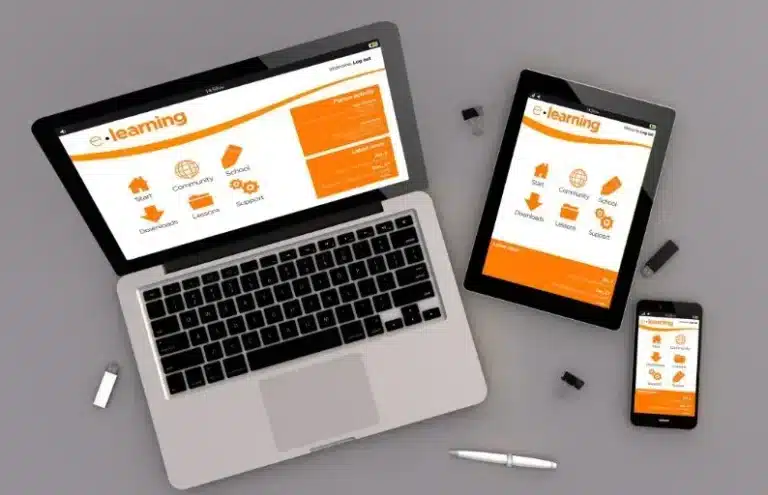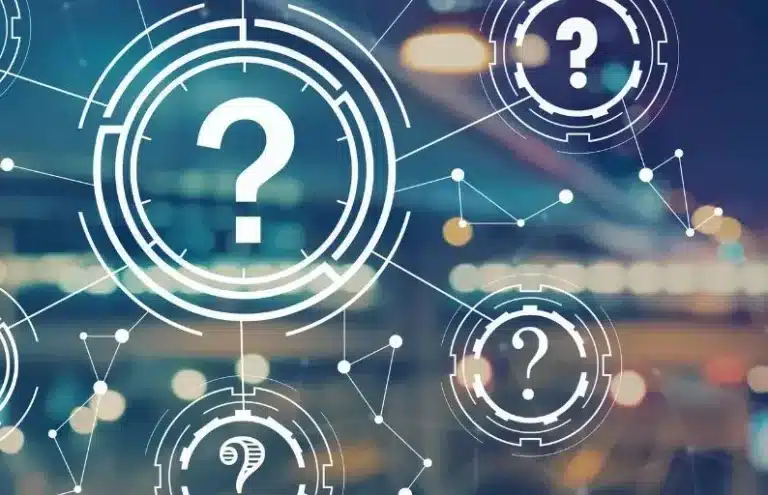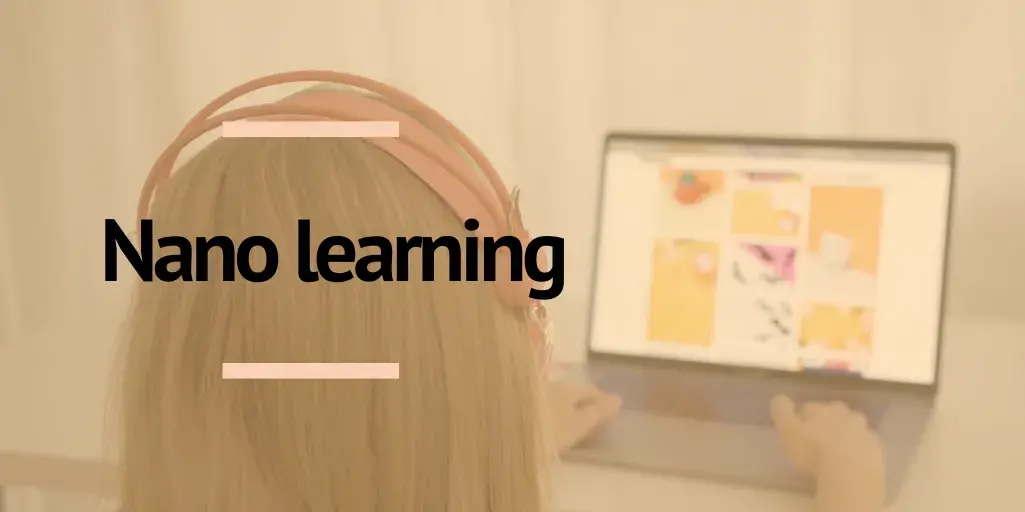Over the years, online learning has evolved, first with video courses, then with virtual campuses, and then with methods such as microlearning and nano learning in education, which are changing the rules of the game.
These methods make it possible to offer compressed content in small doses, something driven in part by the rise of asynchronous study through e-learning platforms, especially in the case of candidates and professionals, who combine work and studies and need flexibility when it comes to training.
In this article we tell you what nanolearning is, how it differs from microlearning, how to implement it in your courses, what a nano learning platform looks like and how it is contributing to the digital transformation of learning.
What is nanolearning?

Nanolearning is an educational methodology based on learning and reinforcing concepts or skills through very short, concrete and focused content that is consumed in less than 2 minutes.
Unlike microlearning, which groups content into 5 to 10 minute capsules, nanolearning compresses the content even more, fragmenting the information as much as possible without losing usefulness or depth.
And why should you pay attention to it? Because it is a very effective online learning modality. Nanolearning in education gets straight to the point, the message is repeated just enough to stick and it is a format that is easily integrated into e-learning platforms.
What is the difference between nano learning and microlearning?

Although they look the same and are often confused, microlearning and online nanolearning in education are not the same.
Microlearning is based on 5-10 minute lessons that develop an entire skill or concept, such as a 10-minute module on ‘General Civil Servants’ Rules’. Nano learning, on the other hand, goes further. It does not seek to explain a complete concept, but rather to focus on a single idea or piece of information with much shorter content, for a nano learning example, a 1-minute pill explaining what the Basic Statute of the Public Employee is.
To better understand the differences between nanolearning vs. microlearning, we have compared several aspects:
| Nanolearning | Microlearning | |
|---|---|---|
| Average length of content | ||
| Average length of content | 5 to 10 minutes | Less than 2 minutes |
| Typical applications | ||
| Typical applications | Continuous training, onboarding, review of key concepts | Quick reminders, on-the-job support, on-the-spot reinforcement |
| Content format | ||
| Content format | Short videos, quizzes, podcasts, infographics | Flascards, push messages, images, microvideos |
| Recommended frequency | ||
| Recommended frequency | Several times a week, depending on the study plan | Daily or several times a day at small available times |
| Main objective | ||
| Main objective | Understand and retain small blocks of knowledge | Activate or reinforce specific knowledge instantly |
How to implement nanolearning on an e-learning platform
Nanolearning is not just about cutting content to make it shorter, but redesigning it to make it useful and didactic at the right time.
Implementing nanolearning in an elearning platform involves taking into account aspects such as the subject matter of the content, the learner profile and even the functionalities of the tool itself in order to offer continuous nanolearning without saturating the user.
Some nano learning in education techniques to incorporate into your online courses are:
- Choose key content to divide: identify topics that are dense, repetitive or require constant memorisation, such as formulas, dates, definitions or vocabulary. These are ideal for turning into ultra-short pills.
- Turn concepts into visual pills: use visual formats such as images, GIFs, videos of a few seconds or flashcards. One of the nanolearning tools you can use to create these designs is Canva.
- Schedule notifications or reminders: automate the sending of notifications or small reminders at key times of the day to maintain the habit. This is very common in mobile apps, such as Duolingo, which uses these types of alerts to turn learning into a game and daily ritual.
- Evaluate retention with mini quizzes: you can carry out daily mini tests of about 3 questions to fix the knowledge and be able to evaluate the performance of your content.
Should nanolearning be applied equally in an academy and in a company?

Although the format is the same, nanolearning in education is not a one-size-fits-all recipe, but must be adapted to the environment and the type of training being offered.
For example, it is not the same to use nanolearning in a civil service examination academy as it is to incorporate it in a company. In a civil service examination academy, the focus is much more on memorisation and active repetition, such as retention of dates and legislation, so a flashcard format might be a suitable option.
In nano-learning for companies, during internal training on business ethics, for example, the content is more oriented towards soft skills development, updating regulations or internal culture. It tends to have a more informal format embedded in the working day, such as a short internal newsletter.
Some nano learning examples and types of content depending on the training environment are:
| Academy for competitive examinations | Companies | |
|---|---|---|
| Objectives | ||
| Objectives | Reinforce memorisation and automate recall, learn new concepts | Activate soft skills, update knowledge and internal culture |
| Ideal frequency | ||
| Ideal frequency | Daily or several times a day | 2 to 4 times a week |
| Type of content | ||
| Type of content | ◘ Flashcards with definitions and key dates of the subject | ◘ Mini videos with real conflict situations |
| ◘ 1-minute videos explaining test techniques | ◘ Practical tips in carousel format or stories | |
| ◘ Push notifications with a pill of the day | ◘ Messages in Slack or Teams with good practices | |
| ◘ Express daily quizzes on important dates | ◘ Express polls or 1-click decisions on ethical dilemmas | |
| ◘ Short audios to review legislation on the go | ◘ A short newsletter on recycling in the office | |
How are nano learning and microlearning transforming the way we learn?
The digital transformation of learning is a fact. Acquiring new knowledge and studying is no longer just about sitting in front of a screen for hours reading articles and watching live lectures.
Microlearning and nanolearning are transforming the way we learn, adapting to how information is really consumed today: short, quick and to the point.
Both methods break with the traditional way of online training and are committed to incorporating learning into everyday life. In this way, students do not have to make time in their schedules to dedicate a few hours to training. With self-directed nanolearning, the learner is in full control and study becomes part of the daily routine.
Digital nanolearning means less information saturation, better time management and better retention. The dosage in small pills, the spaced repetition and the integration with different types of nano learning platforms and tools make nanolearning strategies very effective.
Frequently asked questions about nanolearning

What is the ideal duration of a nanolearning module?
It is recommended that it should be no longer than 2 minutes. In many cases, even 30 to 60 seconds is sufficient if the content is well structured and focused.
What kind of content works best?
The best content is content that has a visual or gamification aspect, such as flashcards, very short videos, one-question quizzes or explanatory GIFs.
Can I use nanolearning as a sole teaching method?
Although the advantages of nanolearning are manifold, it is not recommended. It is an ideal complement, not a substitute for structured classes or in-depth training. It works very well as reinforcement or review.
How do I measure it? How do I know if it works?
You can assess its impact with quick, small evaluations of a few questions and other indicators such as participation rate, measuring clicks, responses or time spent watching a video. You can also evaluate the overall performance of a course by comparing the results of a group that has had reinforcement and one that has not to detect the benefits of nanolearning. How do I measure it? How do I know if it works?
